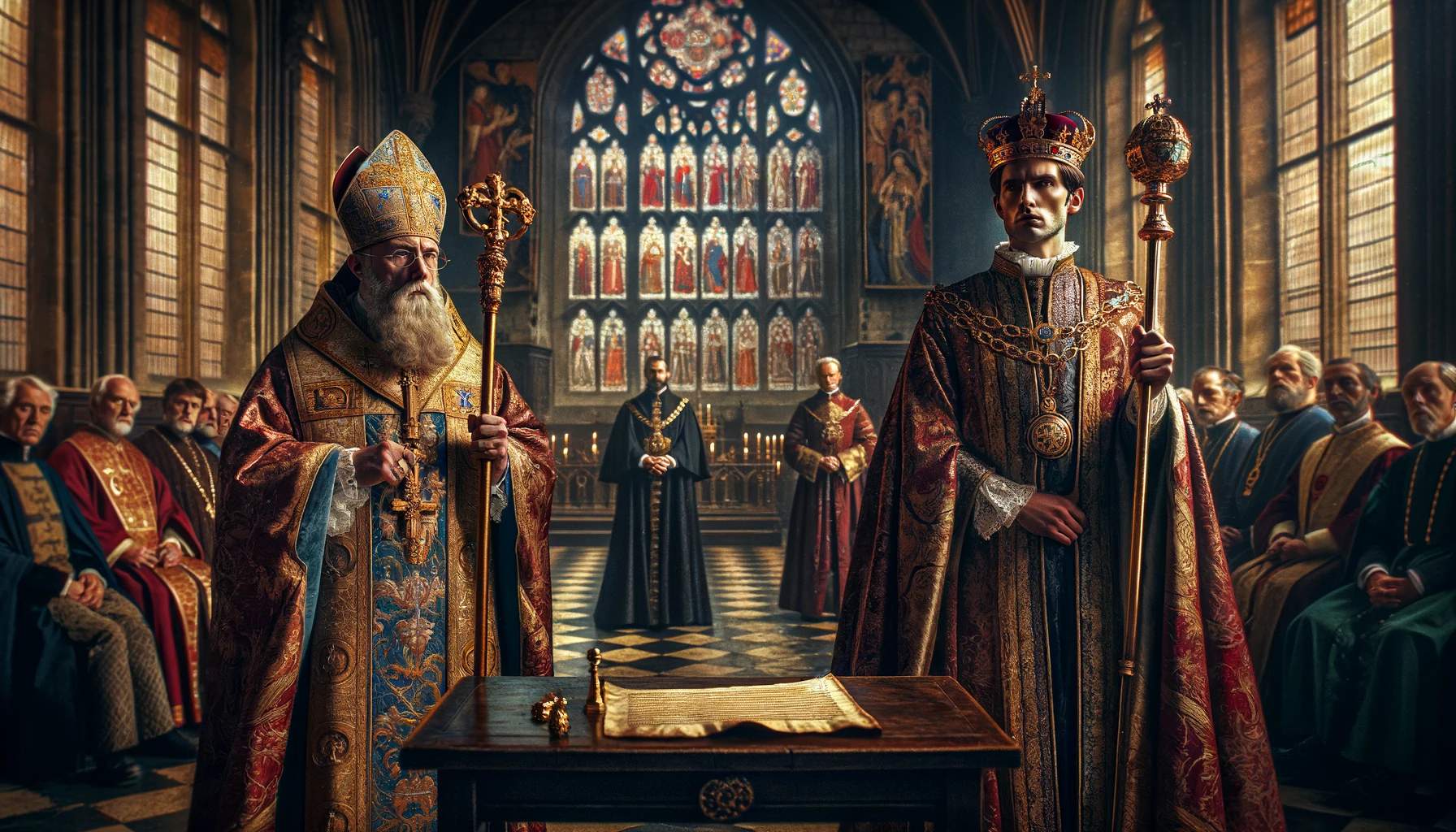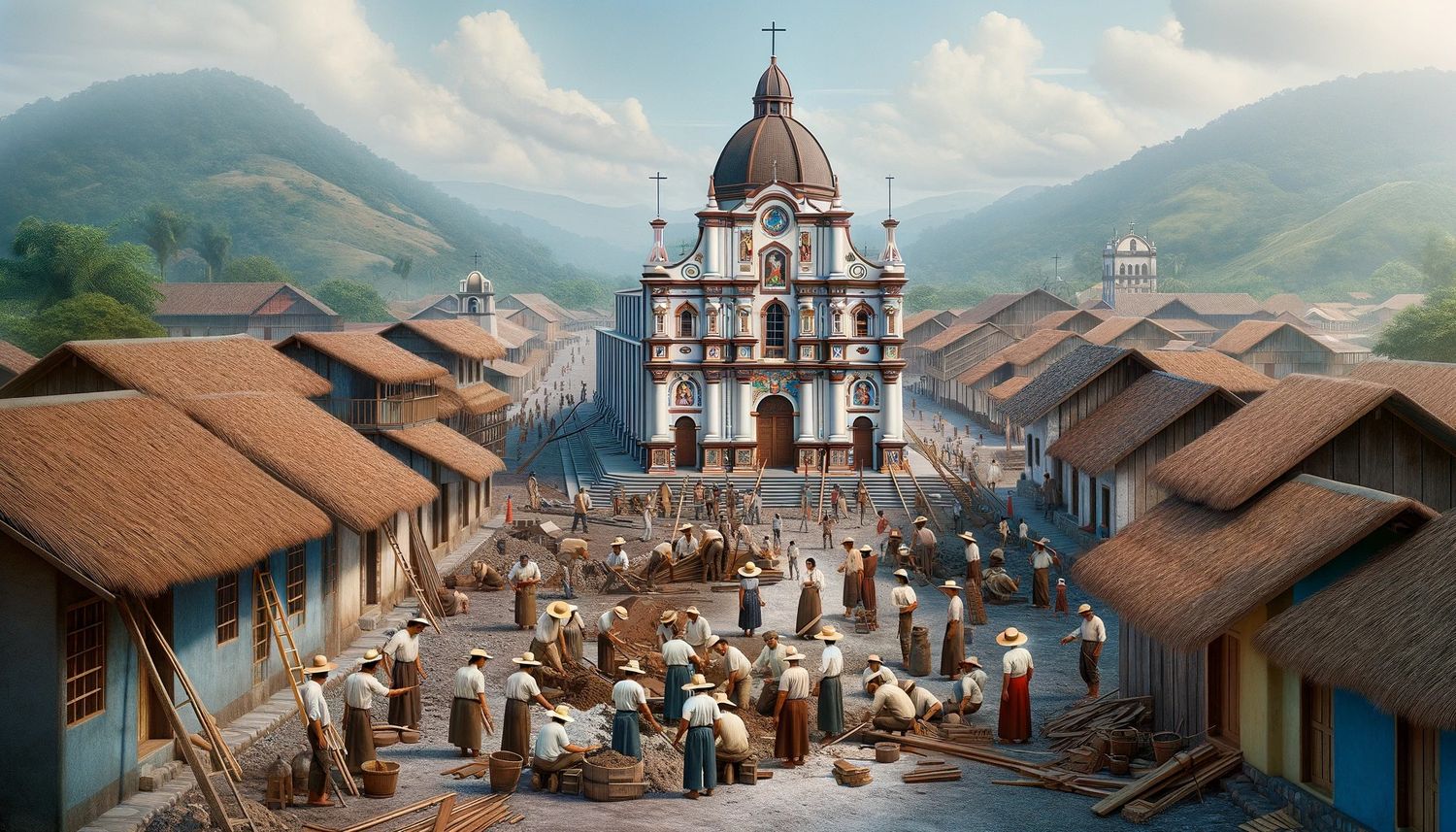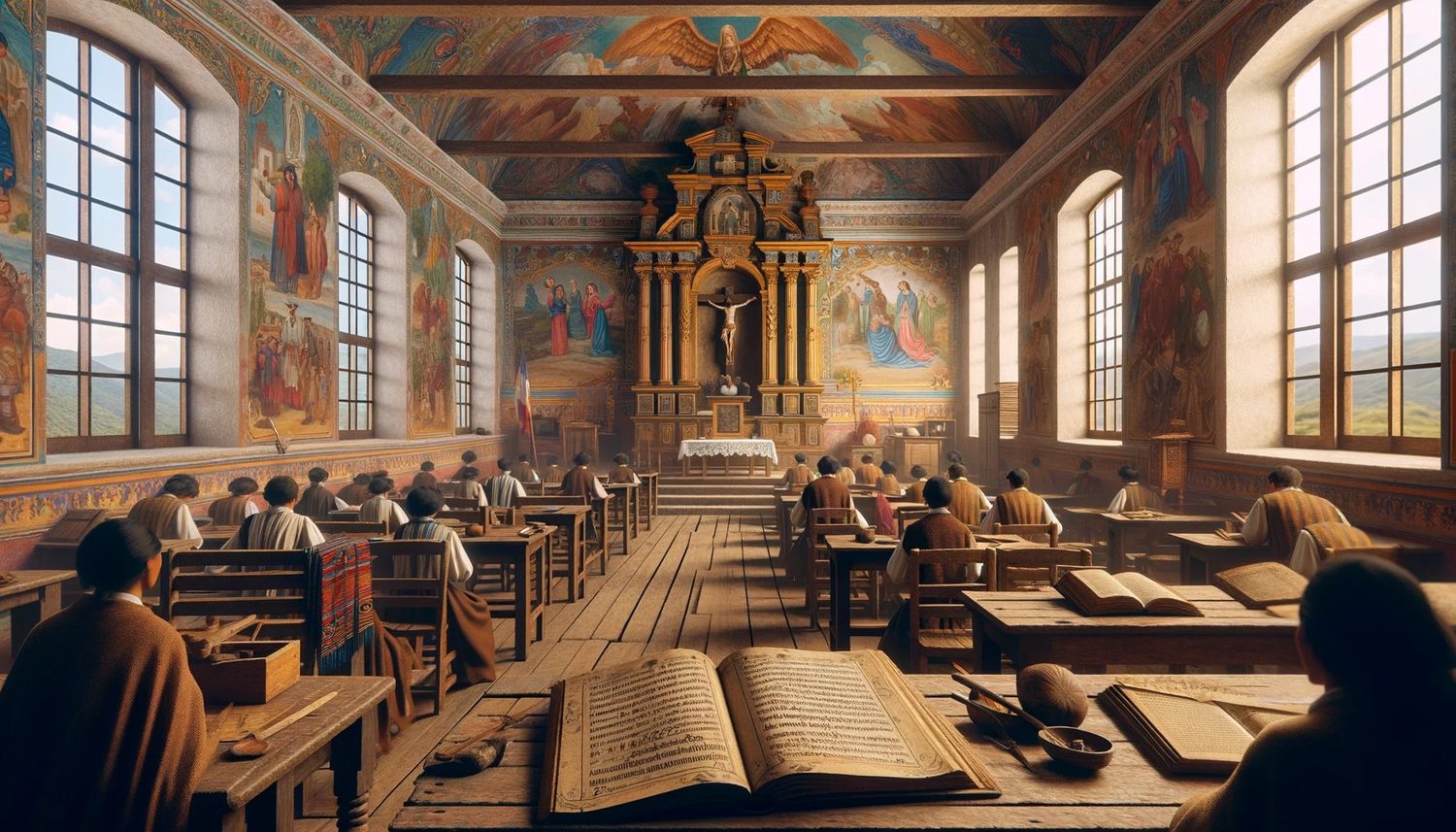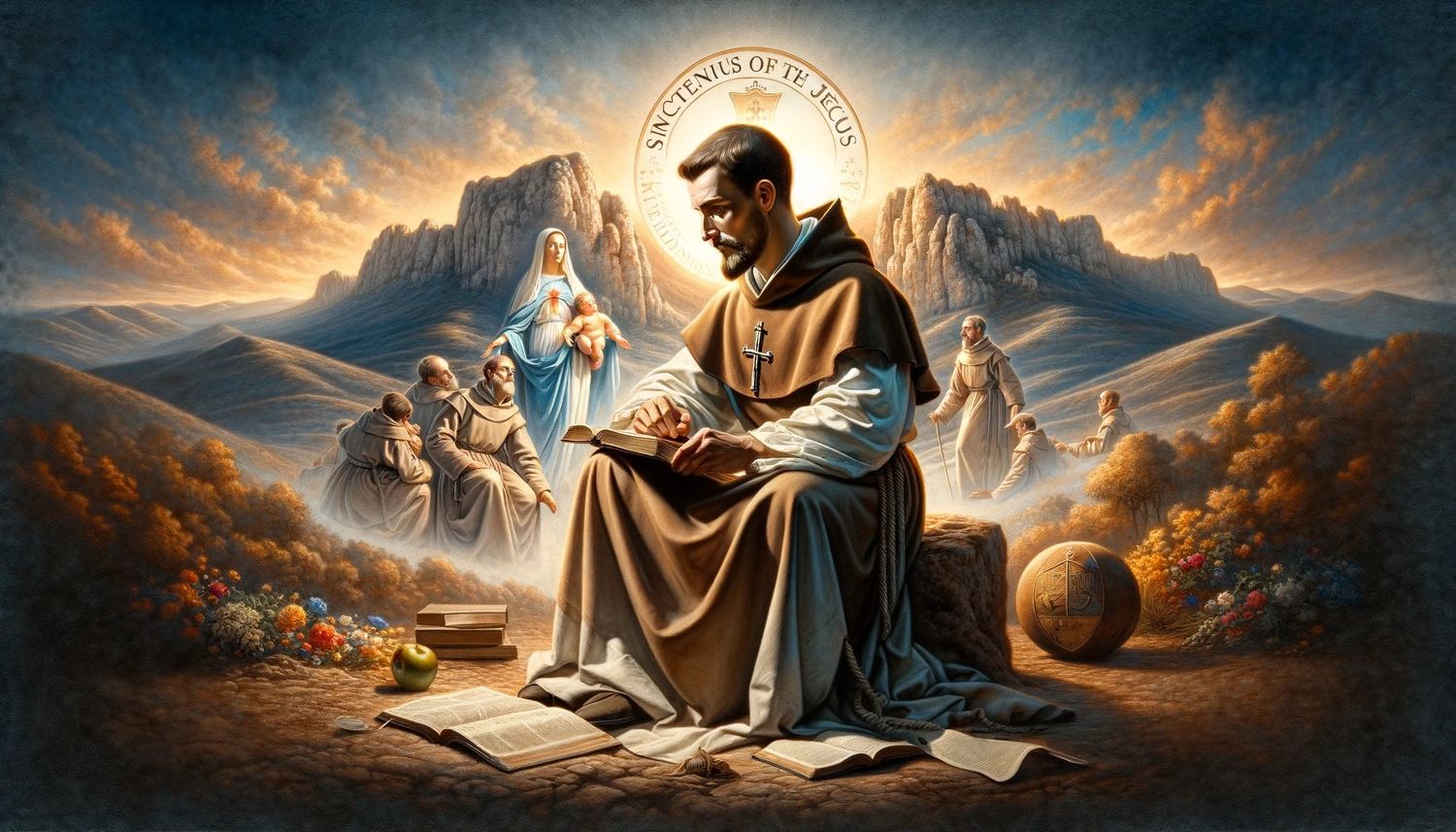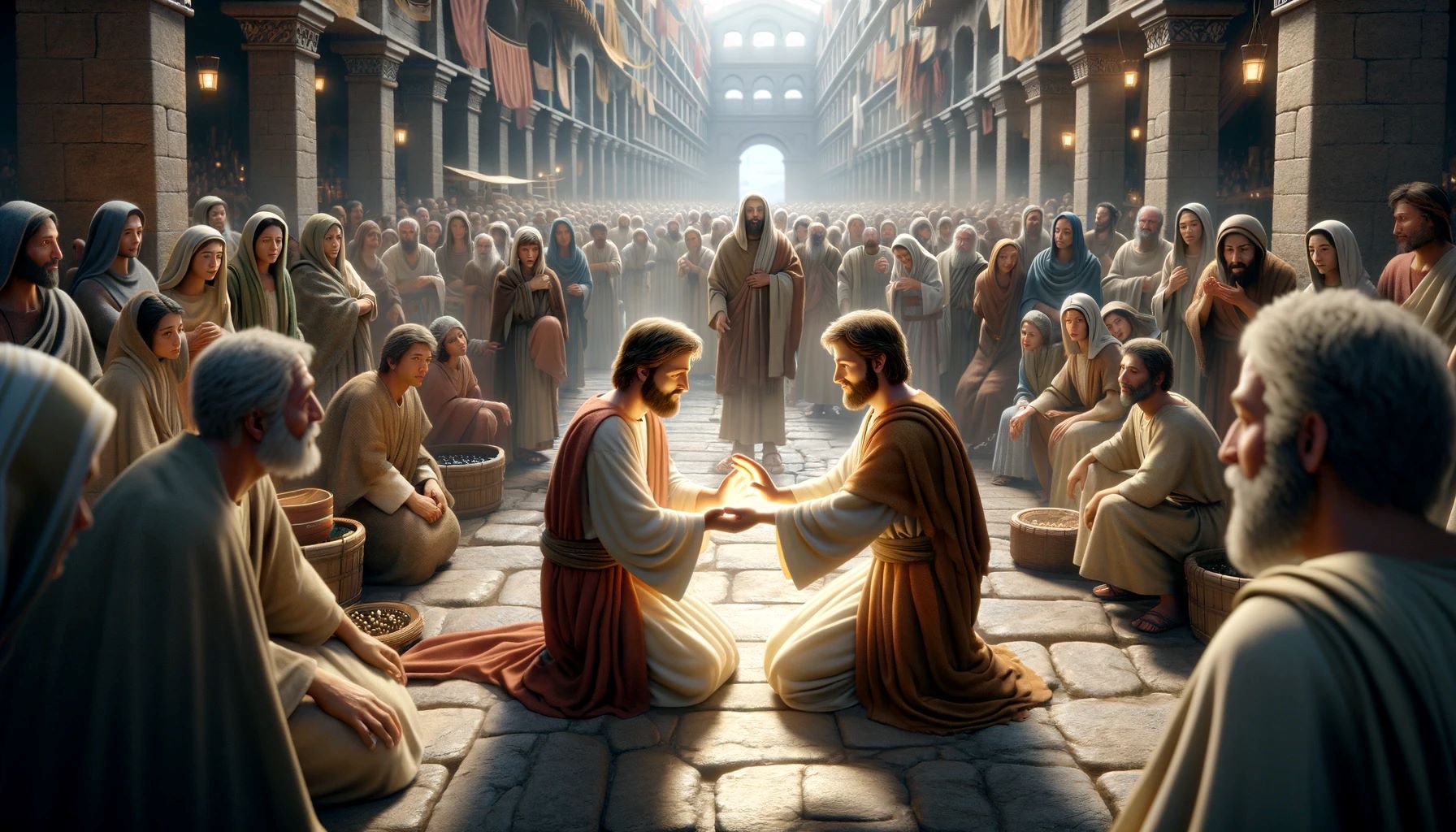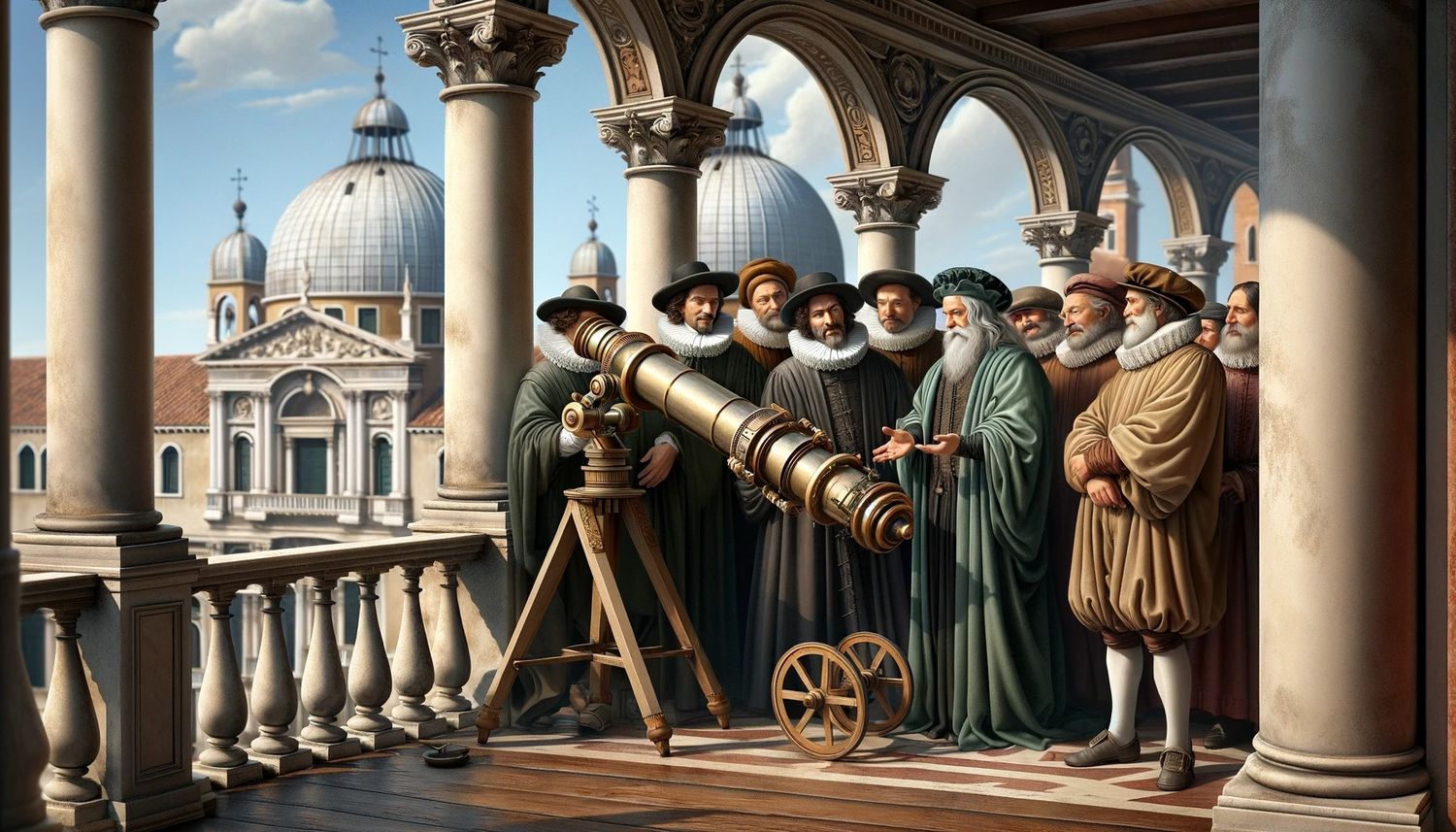Home>Theology and Spirituality>How Did Catholicism In The Spanish Colony Help The Spanish To Gain, Consolidate, And Maintain Power
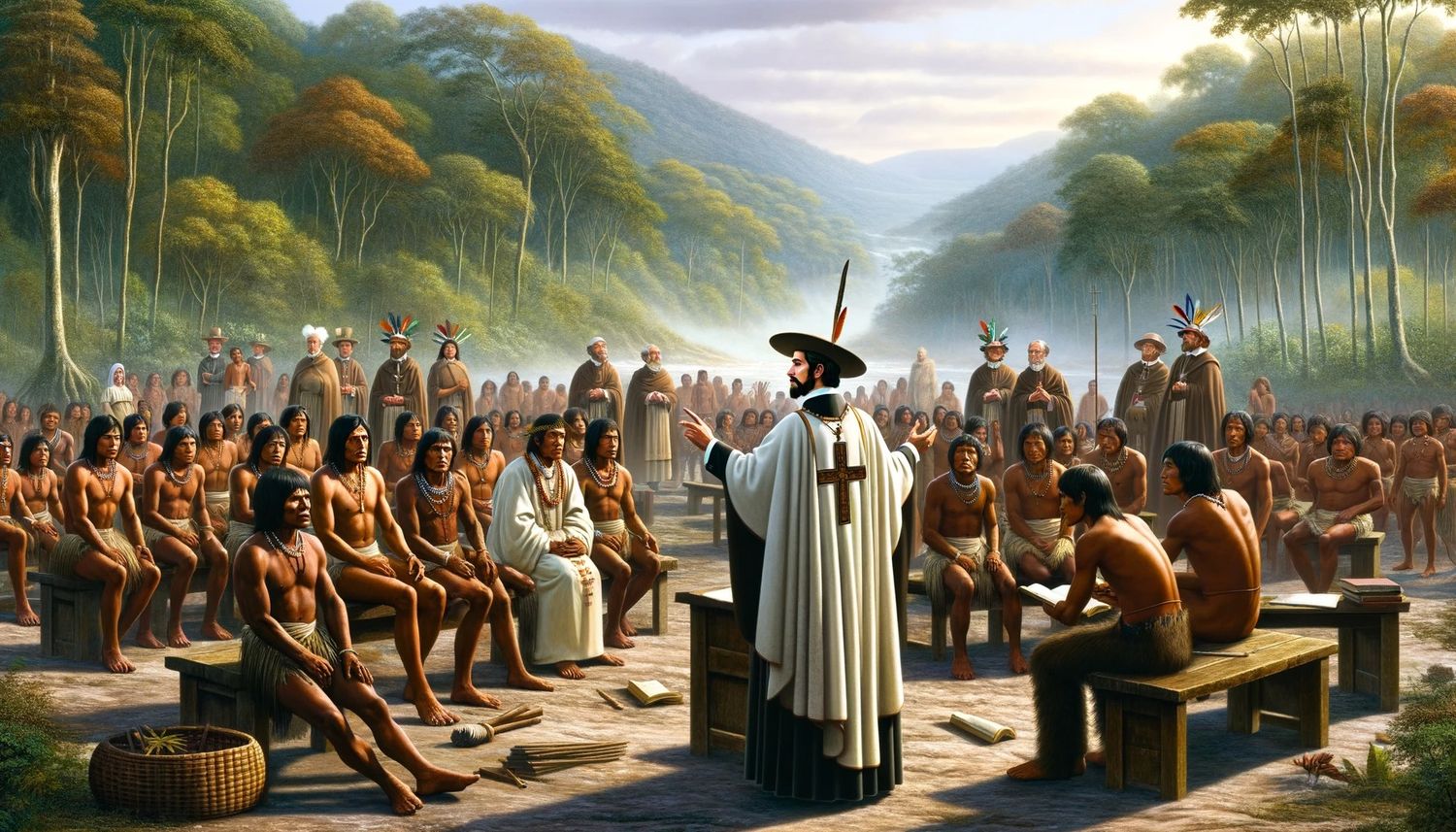

Theology and Spirituality
How Did Catholicism In The Spanish Colony Help The Spanish To Gain, Consolidate, And Maintain Power
Published: February 18, 2024
Ericka Andersen, an editor at Christian.net, expertly merges digital strategy with content creation, focusing on faith and societal issues. Her communication skills enhance the platform's engaging narratives, fostering meaningful dialogue on belief's impact on society.
Explore the impact of Catholicism in the Spanish colony on the acquisition and preservation of Spanish authority. Discover the intertwining of theology and spirituality in the consolidation of power.
(Many of the links in this article redirect to a specific reviewed product. Your purchase of these products through affiliate links helps to generate commission for Christian.net, at no extra cost. Learn more)
Table of Contents
Introduction
The intertwining of religion and colonialism has been a recurring theme throughout history, and the Spanish colonization of the Americas provides a compelling case study of this dynamic. Catholicism played a pivotal role in the Spanish conquest and subsequent rule over the indigenous populations of the Spanish colonies. The fusion of religious zeal with imperial ambition created a potent force that facilitated the Spanish in gaining, consolidating, and maintaining power in the New World.
The arrival of Spanish conquistadors in the Americas brought with it not only military prowess but also a fervent commitment to spreading the Catholic faith. This fervor was deeply rooted in the Spanish identity, as the Reconquista, the centuries-long struggle to expel Muslim Moors from the Iberian Peninsula, had imbued the Spanish with a sense of religious mission. As such, the conquest of the Americas was viewed not only as a quest for territorial expansion and wealth but also as a divine mandate to bring Christianity to the indigenous peoples.
The Catholic Church, as an institution, became an indispensable ally to the Spanish crown in the process of colonization. The Church provided the ideological justification for the subjugation of native populations, framing the conquest as a crusade to save souls and bring civilization to the "heathen" lands. Moreover, the Church wielded immense influence and authority, enabling it to act as a conduit for the dissemination of Spanish cultural norms and values among the indigenous peoples.
The impact of Catholicism on Spanish colonization extended beyond the realm of religion. It permeated every facet of colonial society, shaping social, political, and economic structures. The fusion of religious and secular authority allowed the Church to exert significant control over the daily lives of the colonized populations, further entrenching Spanish dominance.
In this article, we will delve into the multifaceted role of Catholicism in Spanish colonization, exploring how it facilitated the conversion and control of indigenous populations, its collaboration with the Spanish crown, its role in the inquisition and suppression of dissent, and its function as a tool for social control. By examining these aspects, we can gain a deeper understanding of how Catholicism served as a linchpin in the Spanish quest for power and dominance in the New World.
The Role of Catholicism in Spanish Colonization
The role of Catholicism in Spanish colonization was multifaceted and far-reaching, permeating every aspect of the conquest and subsequent rule over the Americas. From the earliest voyages of exploration to the establishment of colonial administrations, the Catholic Church served as a powerful instrument in advancing Spanish interests and solidifying their dominion over the indigenous populations.
At the heart of Spanish colonial enterprise was the fervent commitment to spreading the Catholic faith. The Spanish conquistadors, driven by a potent blend of religious zeal and imperial ambition, viewed the conversion of indigenous peoples as a sacred duty. This missionary fervor was deeply ingrained in the Spanish identity, stemming from the centuries-long struggle of the Reconquista, which culminated in the expulsion of the Muslim Moors from the Iberian Peninsula. The conquest of the Americas was thus imbued with a sense of divine mission, wherein the propagation of Christianity was intertwined with the expansion of Spanish dominion.
The Catholic Church, as an institution, played a pivotal role in legitimizing and perpetuating Spanish colonization. It provided the ideological framework for the subjugation of native populations, framing the conquest as a crusade to save souls and bring civilization to the "heathen" lands. The doctrine of the "spiritual conquest" served as a potent justification for the imposition of Spanish authority and the displacement of indigenous belief systems. Moreover, the Church wielded immense influence and authority, enabling it to act as a conduit for the dissemination of Spanish cultural norms and values among the indigenous peoples.
The fusion of religious and secular authority allowed the Catholic Church to exert significant control over the daily lives of the colonized populations. It played a central role in shaping social, political, and economic structures, thereby reinforcing Spanish dominance. The establishment of missions and the conversion of indigenous communities into Catholicism served not only as a means of spiritual salvation but also as a mechanism for social control and cultural assimilation.
In essence, the role of Catholicism in Spanish colonization was pivotal in shaping the trajectory of the New World. It provided the moral and ideological underpinnings for the conquest, facilitated the conversion and control of indigenous populations, and entrenched Spanish hegemony in the Americas. The fusion of religious fervor with imperial ambition created a potent force that propelled the Spanish in their quest for power and dominance in the New World.
Conversion and Control of Indigenous Populations
The conversion and control of indigenous populations were central to the Spanish colonial enterprise in the Americas. Catholicism served as a powerful tool in this endeavor, shaping the religious, social, and cultural landscape of the New World.
Upon their arrival in the Americas, Spanish conquistadors embarked on a mission to convert the indigenous populations to Catholicism. The process of conversion was multifaceted, often involving a combination of persuasion, coercion, and outright force. Franciscan, Dominican, and Jesuit missionaries played a pivotal role in this endeavor, establishing missions and evangelizing among the native communities. The missions served as hubs for religious instruction, agricultural development, and the imposition of Spanish cultural norms. Through these efforts, the indigenous populations were gradually integrated into the fold of Catholicism, marking a profound transformation of their spiritual and cultural identities.
The conversion of indigenous populations was not merely a religious undertaking but also a means of exerting control. By embracing Catholicism, the native communities were brought under the influence of the Spanish colonial authorities and the Catholic Church. The missions, often established in close proximity to indigenous settlements, served as outposts of Spanish control, facilitating the imposition of colonial rule and the enforcement of tribute and labor obligations. The conversion process, therefore, was intertwined with the broader project of subjugating and assimilating the indigenous populations into the Spanish colonial framework.
The Catholic Church played a pivotal role in overseeing the conversion and control of indigenous populations. It wielded significant influence and authority, acting as a conduit for the dissemination of Spanish cultural norms and values. The Church's involvement in the administration of the missions and the regulation of indigenous affairs further solidified its role as a key instrument of Spanish colonial control. The fusion of religious and secular authority allowed the Church to shape the daily lives of the colonized populations, reinforcing Spanish dominance and perpetuating the colonial order.
In essence, the conversion and control of indigenous populations were intrinsically linked to the spread of Catholicism in the Americas. The process of conversion served as a mechanism for exerting Spanish control over the native communities, while the Church played a central role in overseeing this transformative endeavor. The fusion of religious zeal with imperial ambition propelled the Spanish in their quest to gain, consolidate, and maintain power in the New World.
Collaboration with the Spanish Crown
Collaboration with the Spanish Crown was a defining aspect of the Catholic Church's role in Spanish colonization. The Church's alliance with the monarchy was instrumental in advancing Spanish interests and consolidating their authority in the Americas.
From the outset, the Catholic Church forged a symbiotic relationship with the Spanish Crown, aligning its religious mission with the objectives of the monarchy. The Church provided the ideological justification for the conquest and subjugation of indigenous populations, framing the expansion of Spanish dominion as a divine mandate to bring Christianity to the New World. This alignment of religious and imperial agendas served to legitimize the colonial enterprise and garner the support of the Spanish populace for overseas expansion.
Moreover, the Church actively collaborated with the Spanish Crown in the administration of the colonies. It played a central role in overseeing the establishment of ecclesiastical institutions, including dioceses and archdioceses, which served as extensions of royal authority in the New World. The Church's involvement in the governance of the colonies, coupled with its vast landholdings and economic influence, further solidified its partnership with the monarchy, creating a system of mutual reinforcement and cooperation.
The collaboration between the Catholic Church and the Spanish Crown extended to the realm of social and cultural control. The Church, acting as a custodian of religious orthodoxy, worked in tandem with the monarchy to enforce Spanish cultural norms and values among the indigenous populations. Through the missions and the religious education imparted by the clergy, the Church played a pivotal role in shaping the social fabric of the colonies, aligning it with the interests of the Spanish Crown.
Furthermore, the Church's collaboration with the Spanish Crown was evident in its active participation in the colonial economy. The Church amassed vast wealth through land grants, tithes, and donations, becoming a major economic power in the colonies. This economic influence, coupled with the Church's close ties to the monarchy, further entrenched its position as a key ally of Spanish colonial rule.
In essence, the collaboration between the Catholic Church and the Spanish Crown was a linchpin of Spanish colonization. The alignment of religious, political, and economic interests created a formidable alliance that propelled the Spanish in their quest for power and dominance in the New World. The Church's role as a partner to the monarchy underscored its pivotal contribution to the consolidation and maintenance of Spanish authority in the Americas.
The Inquisition and Control of Dissent
The Spanish Inquisition, established in 1478, was a powerful tool employed by the Catholic Church and the Spanish Crown to maintain religious orthodoxy and suppress dissent within the Spanish colonies. While initially focused on rooting out heresy and enforcing religious conformity in Spain, the Inquisition's reach extended to the Americas following the conquest. Its role in the New World was instrumental in consolidating Spanish authority and quelling challenges to colonial rule.
The Inquisition operated through tribunals known as "autos-da-fé," where individuals accused of heresy, blasphemy, or other offenses against the Catholic faith faced trial. The tribunals wielded extensive powers, including the authority to arrest, interrogate, and punish those deemed to be in violation of religious doctrine. This pervasive system of surveillance and control instilled fear and compliance among the colonized populations, reinforcing Spanish dominance.
In the context of the Spanish colonies, the Inquisition served as a mechanism for suppressing dissent and upholding the religious and political hegemony of the Spanish Crown. It targeted not only individuals suspected of deviating from Catholic orthodoxy but also those perceived as challenging Spanish authority. Indigenous leaders, intellectuals, and anyone perceived as a threat to the colonial order were subject to scrutiny and persecution by the Inquisition, effectively stifling opposition and dissent.
The Inquisition's impact extended beyond its direct enforcement of religious conformity. Its presence loomed large in the collective consciousness of the colonized populations, serving as a potent deterrent against any form of resistance. The specter of the Inquisition, with its reputation for ruthless persecution and punishment, cast a long shadow over the New World, contributing to the maintenance of social control and the preservation of Spanish hegemony.
Moreover, the Inquisition's activities were intertwined with the broader project of cultural assimilation and the suppression of indigenous belief systems. By targeting practices deemed as heretical or pagan, the Inquisition sought to eradicate indigenous spiritual traditions and impose Catholicism as the sole religious authority. This systematic erasure of native beliefs further entrenched Spanish cultural and religious dominance, contributing to the subjugation of indigenous populations.
In essence, the Inquisition played a pivotal role in the control of dissent and the preservation of Spanish authority in the Americas. Its far-reaching influence extended beyond matters of religious orthodoxy, shaping the social, cultural, and political landscape of the Spanish colonies. The Inquisition's legacy as a tool of repression and control underscores its profound impact on the trajectory of Spanish colonization in the New World.
Read more: Which Colony Was The Center Of Catholicism?
Catholicism as a Tool for Social Control
Catholicism served as a potent tool for social control in the context of Spanish colonization, exerting a profound influence on the daily lives and societal structures of the indigenous populations in the Americas. The fusion of religious doctrine with the mechanisms of colonial authority enabled Catholicism to permeate every facet of colonial society, shaping social hierarchies, cultural norms, and behavioral expectations.
At the heart of Catholicism's role as a tool for social control was the establishment of missions and the conversion of indigenous communities to the Catholic faith. The missions, operated by orders such as the Franciscans, Dominicans, and Jesuits, served as centers for religious instruction, agricultural development, and the imposition of Spanish cultural norms. Through the missions, the Church not only sought to impart religious teachings but also to instill European customs and practices, effectively reshaping the social fabric of indigenous societies.
Catholicism also played a pivotal role in reinforcing existing power structures and hierarchies within the colonial framework. The Church, in collaboration with the Spanish Crown, upheld a rigid social order that placed the Spanish at the apex, followed by creoles, mestizos, and indigenous populations. By promoting the acceptance of this hierarchical social order as part of divine will, Catholicism legitimized and perpetuated the existing power differentials, thereby consolidating Spanish dominance.
Furthermore, the sacraments and religious rituals of Catholicism were intricately woven into the fabric of daily life, regulating behavior and interpersonal relationships within indigenous communities. The sacraments of baptism, marriage, and confession, administered by the clergy, served as mechanisms for surveillance and control, shaping individual conduct and communal dynamics. The Church's influence extended to matters of morality, family structure, and communal obligations, thereby cementing its role as a custodian of social norms and values.
The fusion of religious and secular authority allowed Catholicism to function as a pervasive instrument of social control, permeating the private and public spheres of indigenous life. The Church's oversight of education, healthcare, and charitable activities further solidified its influence over the colonized populations, reinforcing Spanish hegemony and perpetuating the colonial order.
In essence, Catholicism emerged as a formidable tool for social control in the context of Spanish colonization, shaping the cultural, social, and behavioral landscape of the Americas. Its fusion with the mechanisms of colonial authority enabled the Church to exert significant influence over the daily lives and societal structures of the indigenous populations, contributing to the consolidation and maintenance of Spanish power in the New World.
Conclusion
In conclusion, the role of Catholicism in Spanish colonization of the Americas was multifaceted and far-reaching, serving as a linchpin in the Spanish quest for power and dominance in the New World. The fusion of religious zeal with imperial ambition created a potent force that facilitated the Spanish in gaining, consolidating, and maintaining power over the indigenous populations. From the conversion and control of indigenous communities to collaboration with the Spanish Crown, the Inquisition, and the use of Catholicism as a tool for social control, the influence of the Catholic Church permeated every aspect of the colonial enterprise.
The conversion and control of indigenous populations were central to the Spanish colonial project, and Catholicism played a pivotal role in this endeavor. The missions and the efforts of the clergy facilitated the integration of indigenous communities into the fold of Catholicism, serving as a mechanism for exerting Spanish control and cultural assimilation. The collaboration between the Catholic Church and the Spanish Crown was instrumental in advancing Spanish interests and consolidating their authority in the Americas. The alignment of religious, political, and economic interests created a formidable alliance that propelled the Spanish in their quest for power and dominance in the New World.
Furthermore, the Spanish Inquisition, with its pervasive system of surveillance and control, served as a mechanism for suppressing dissent and upholding the religious and political hegemony of the Spanish Crown. Its impact extended beyond matters of religious orthodoxy, shaping the social, cultural, and political landscape of the Spanish colonies. Additionally, Catholicism emerged as a formidable tool for social control, permeating the cultural, social, and behavioral landscape of the Americas and contributing to the consolidation and maintenance of Spanish power in the New World.
In essence, the intertwining of Catholicism with Spanish colonization created a complex tapestry of religious, political, and cultural dynamics that shaped the trajectory of the New World. The legacy of Catholicism in the Spanish colonies endures as a testament to the enduring influence of religion in the context of colonial expansion and the enduring impact of this historical intersection on the Americas.

